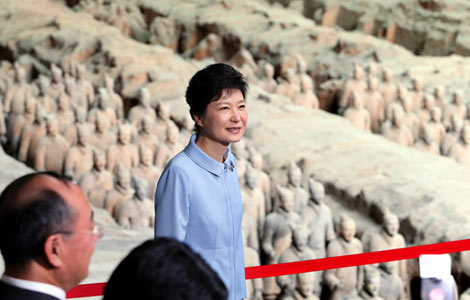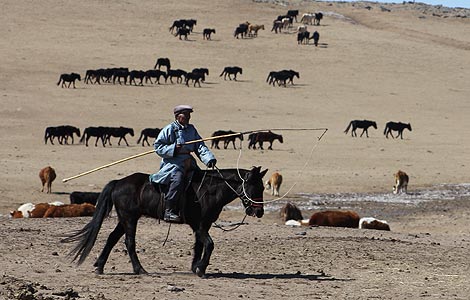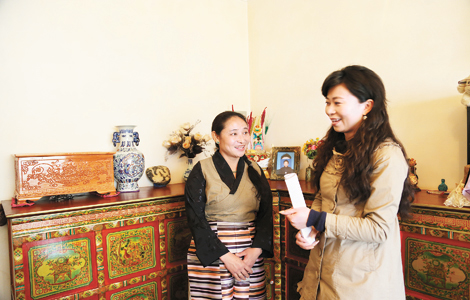Lhasa completes renovation of old city
Updated: 2013-07-01 07:52
(Xinhua)
|
||||||||
LHASA - Lhasa, the capital city of Southwest China's Tibet autonomous region, on Sunday completed renovation of its old city, a bustling cultural and commercial center.
The 1.5-billion-yuan ($243 million) project involved upgrading the sewage system, water supplies and electric lines, elimination of safety hazards, installment of heating facilities and preservation of old-styled buildings, said Che Zala, secretary of the Lhasa municipal committee of the Communist Party of China, at a ceremony.
"The project has enhanced protection of Tibetan cultures, improved the old city's infrastructures and lifted the living conditions there," said Che Zala.
Covering an area of 1.33 square km, the old urban areas of Lhasa centers around Barkhor Street, known for its bustling businesses and cultural sites, and the Jokhang Temple, one of the major monasteries in Tibet and a World Cultural Heritage site.
To solve complaints over the poor infrastructure and to protect the historical buildings in the area, the city government launched renovation plans in December 2012, after winning support from 96 percent of residents.
Phurbu Tashi, a 30-year-old local, said before the revamp, the roads in the old city were often packed with peddlers in the day while too dark for passers-by at night due to a lack of street lamps.
"I'm glad that they installed the Tibetan-style lamps and solved many other problems like tap water supply and the sewage system," he said. "Life here is much safer and cozier."
"The government shouldered all the costs of revamping the electrical lines and water pipes and installing heating facilities, and we haven't spent a penny," said 66-year-old Kunsang.
Kunsang said he is glad because his house on the fourth floor eventually had access to tap water. The old community where Kunsang lives used to rely on well water and later shared faucets in the yard due to low hydraulic pressure in water pipelines.
The Lhasa municipal government has once again entrusted China Academy of Urban Planning and Design (CAUPD) to make plans for the renovation to ensure that the authenticity and traditional flavors carried in the cultural heritages would be preserved while the residential life styles be maintained.
Tsering Yangzom, a Tibetan native who is now an associate researcher with the China Tibetology Research Center, was invited back to Lhasa to visit the renovation project.
"I can see what I saw when I was a little boy everywhere in the city," Yangzom said. "Although some new elements were added to the renovation of Barkhor Street such as the Tibetan-style lamps, there are not many changes (compared with the past) and I feel relieved."
Hong Kong tourist Zhao Qifei recalled that when he first visited Lhasa some three decades ago, there were not much to eat and the hotels were also tatty.
"But now on my fourth visit to Lhasa, I feel that the environment here has improved with material abundance. However, people's life styles and their spiritual beliefs remain the same as before," Zhao said.

 NYC's gay pride march for celebration
NYC's gay pride march for celebration
 Foreign minister makes ASEAN debut as tensions flare
Foreign minister makes ASEAN debut as tensions flare
 Yao stresses transparency in charity
Yao stresses transparency in charity
 Massive debt plagues local gov't
Massive debt plagues local gov't
 Looking abroad for better investment
Looking abroad for better investment
 New high-speed rail starts operation
New high-speed rail starts operation
 Kerry extends Mideast peace mission
Kerry extends Mideast peace mission
 ROK president visits Terracotta Warriors
ROK president visits Terracotta Warriors
Most Viewed
Editor's Picks

|

|

|

|

|

|
Today's Top News
New NSA spying allegations rile EU
Fugitive terror suspect nabbed
Minister makes ASEAN debut
Ministry drafts child welfare system
New exit and entry law effective
'Overseas talent drive requires more guidance'
19 detained for spreading rumors in Xinjiang
Yao stresses transparency in charity
US Weekly

|

|






